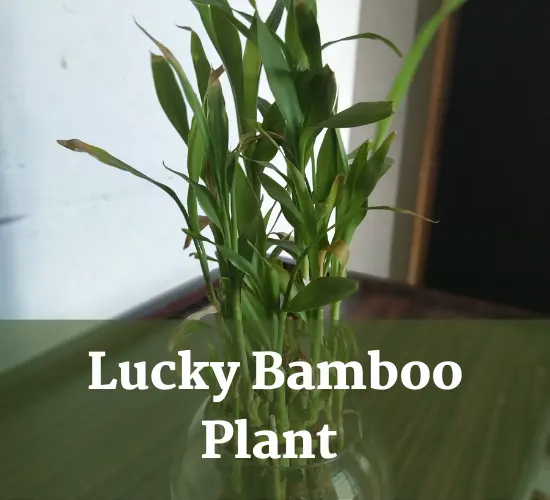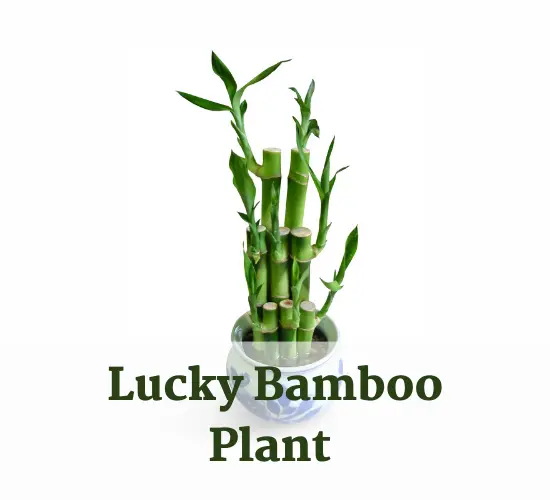Table of Contents
lucky bamboo leaves drooping
Lucky Bamboo(Dracaena Sanderiana) is a popular houseplant that is often associated with good luck and prosperity in Feng Shui. However, if you notice your Lucky Bamboo wilting, it can be a cause for concern. Wilting can indicate a problem with watering, temperature, or lighting, and if left unchecked, can lead to the plant’s demise.
Fortunately, there are steps you can take to revive your wilting Lucky Bamboo and help it thrive. In this article, we’ll provide tips on how to revive your wilting Lucky Bamboo, including the basics of Lucky Bamboo care, common causes of wilting, and resources for support and guidance.
By following these tips, you can ensure that your Lucky Bamboo remains healthy, vibrant, and a source of good luck and prosperity in your home. So, if you’re ready to learn how to revive your wilting Lucky Bamboo, read on!
Key Takeaways

- Proper watering, temperature, and lighting are essential for Lucky Bamboo care, and wilting can indicate a problem with one or more of these factors.
- Overwatering or underwatering can cause significant damage to the plant, so it is important to water soil-based bamboo when the top 50% of the soil is dry and change the water weekly for water-based bamboo.
- Lucky Bamboo thrives in bright, indirect light and should be kept in a stable environment within the temperature range of 65-95°F to prevent wilting.
Lucky Bamboo Care Basics
Lucky Bamboo care basics encompass proper watering, temperature, and lighting to prevent wilting leaves and root rot and to maintain optimal growth conditions for this popular houseplant in Feng Shui.
Watering frequency is crucial, as overwatering or underwatering can cause significant damage to the plant. For soil-based bamboo, it is recommended to water the plant when the top 50% of the soil is dry and discard excess water to prevent root rot. On the other hand, for water-based bamboo, changing the water weekly is necessary to prevent fungal and bacterial growth.

In addition to proper watering, providing the right lighting is also crucial for the health of the plant. Lucky Bamboo requires moderate to low indirect light, as too much light can cause leaves to wilt and turn pale brown or yellow. It is best to place the plant in a bright room but away from direct sunlight. Too little light can also cause the plant to weaken and become susceptible to disease and pests.
By following these basic care tips, lucky bamboo can thrive and bring good luck and prosperity to its owner.
Common Causes of Wilting
Wilting of the leaves in bamboo plants can be attributed to various factors such as improper watering, unsuitable lighting, and temperature fluctuations. Overwatering issues can lead to root rot, which can cause the leaves to wilt and turn yellow. On the other hand, dry soil can cause the roots to dry back and die off, resulting in wilting leaves. To prevent overwatering, it is recommended to water soil-based bamboo when the top 50% of the soil is dry and discard any excess water.
In contrast, water-based bamboo should have its water changed weekly to prevent fungal and bacterial growth. Moreover, lighting problems can also cause the leaves to wilt. Too much light can cause the leaves to turn pale brown or yellow and wilt, while insufficient light can cause the leaves to turn yellow and droop. Lucky bamboo thrives in bright, indirect light. Therefore, it is essential to ensure that the plant is placed in an area with the right amount of light.
Additionally, temperature fluctuations can cause the leaves to wilt, and it is crucial to keep the plant in a stable environment within the temperature range of 65-95°F. By addressing these common causes of wilting, you can help revive your lucky bamboo and keep it healthy.
Frequently Asked Questions
How long does it typically take for a lucky bamboo plant to recover from wilting?
The recovery time for wilting lucky bamboo depends on the severity of the issue and the plant’s ability to adapt to changes in its environment. To revive wilted lucky bamboo, address the underlying issue, provide proper care, and monitor its progress.
Can lucky bamboo be grown in soil and water at the same time?
Growing lucky bamboo in soil and water simultaneously, known as the semi-hydroponic technique, is possible but requires careful maintenance. It involves using a pot with drainage holes and a layer of pebbles to hold water. Maintenance tips include monitoring water levels and using fertilizer.
Is it possible to propagate lucky bamboo from a wilted or dying plant?
Propagating techniques for lucky bamboo involve cutting a healthy stem and placing it in water or soil. While wilted or dying plants can be used, it is recommended to use healthy plants for optimal success. Lucky bamboo is known for its benefits in feng shui.
What are some organic methods for preventing fungal growth in water-based lucky bamboo?
Effective techniques for preventing fungal growth in water-based lucky bamboo include using organic methods such as adding a small amount of vinegar or hydrogen peroxide to the water and ensuring the container and water are kept clean.
Are there any pests that commonly affect lucky bamboo, and how can they be treated?
Common pests that affect lucky bamboo include spider mites, mealybugs, and scale insects. Prevention techniques include maintaining proper water-based plant care and using natural pest control methods such as neem oil or insecticidal soap.
Conclusion
Lucky Bamboo is a popular houseplant that brings good luck and prosperity to your home. However, if you notice your Lucky Bamboo wilting, it could indicate a problem with watering, temperature, or lighting.
To revive your plant, it is important to provide proper care and attention. This includes watering it correctly, maintaining the right temperature and lighting conditions, and ensuring its overall health and vitality.
One common cause of wilting is overwatering or underwatering. Make sure to water your Lucky Bamboo with distilled or filtered water and avoid tap water that may contain chlorine and fluoride. Additionally, check the temperature of the room and ensure it is within the ideal range of 65-90°F. Finally, provide adequate lighting by placing your plant near a window or using artificial light if necessary.
It is important to note that while Lucky Bamboo is associated with good luck and prosperity in Feng Shui, there is no scientific evidence to support this claim. However, the plant does have numerous benefits, such as improving air quality and reducing stress levels.
By following these tips, you can not only revive your wilting Lucky Bamboo but also enjoy the many benefits it has to offer.